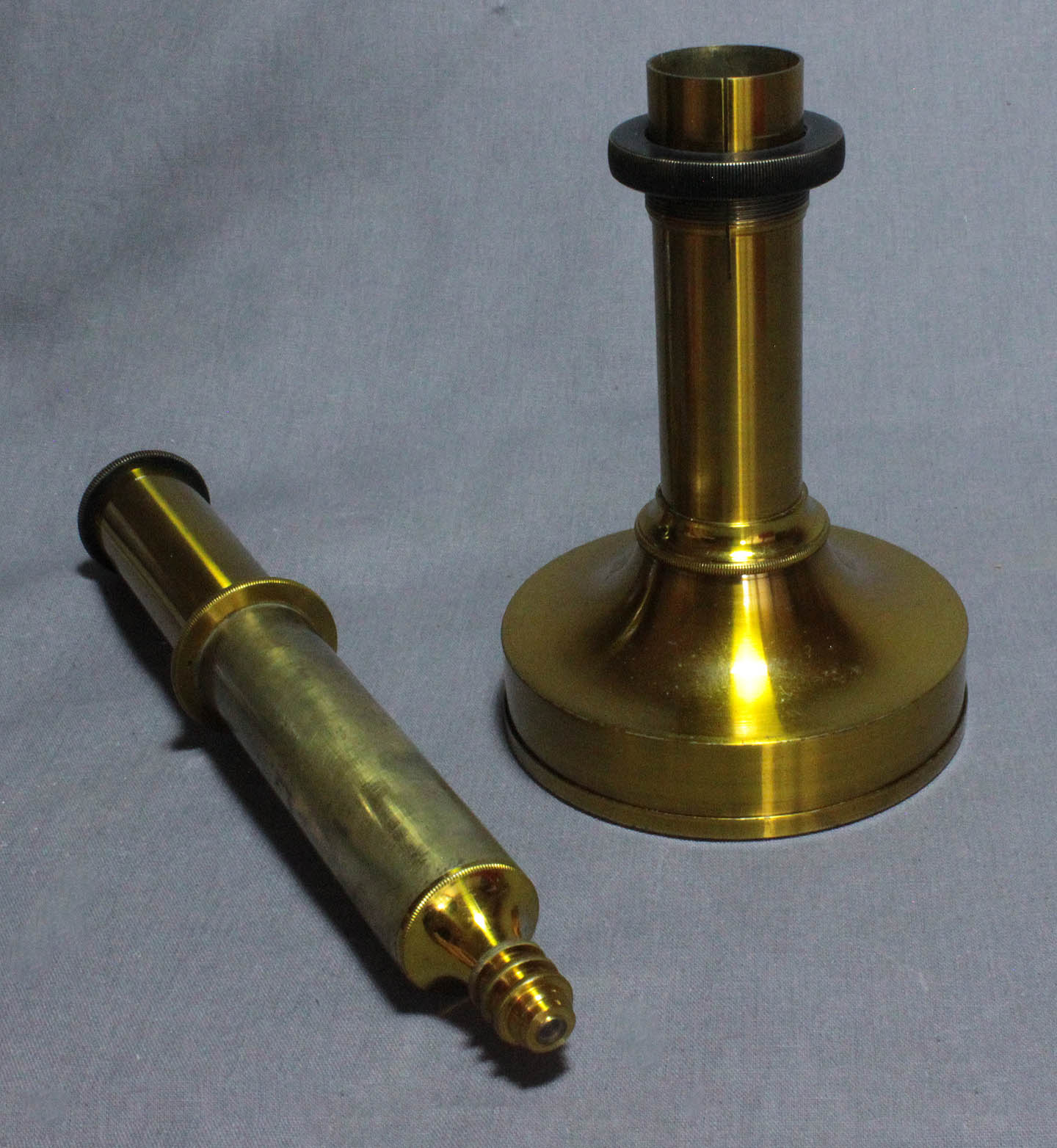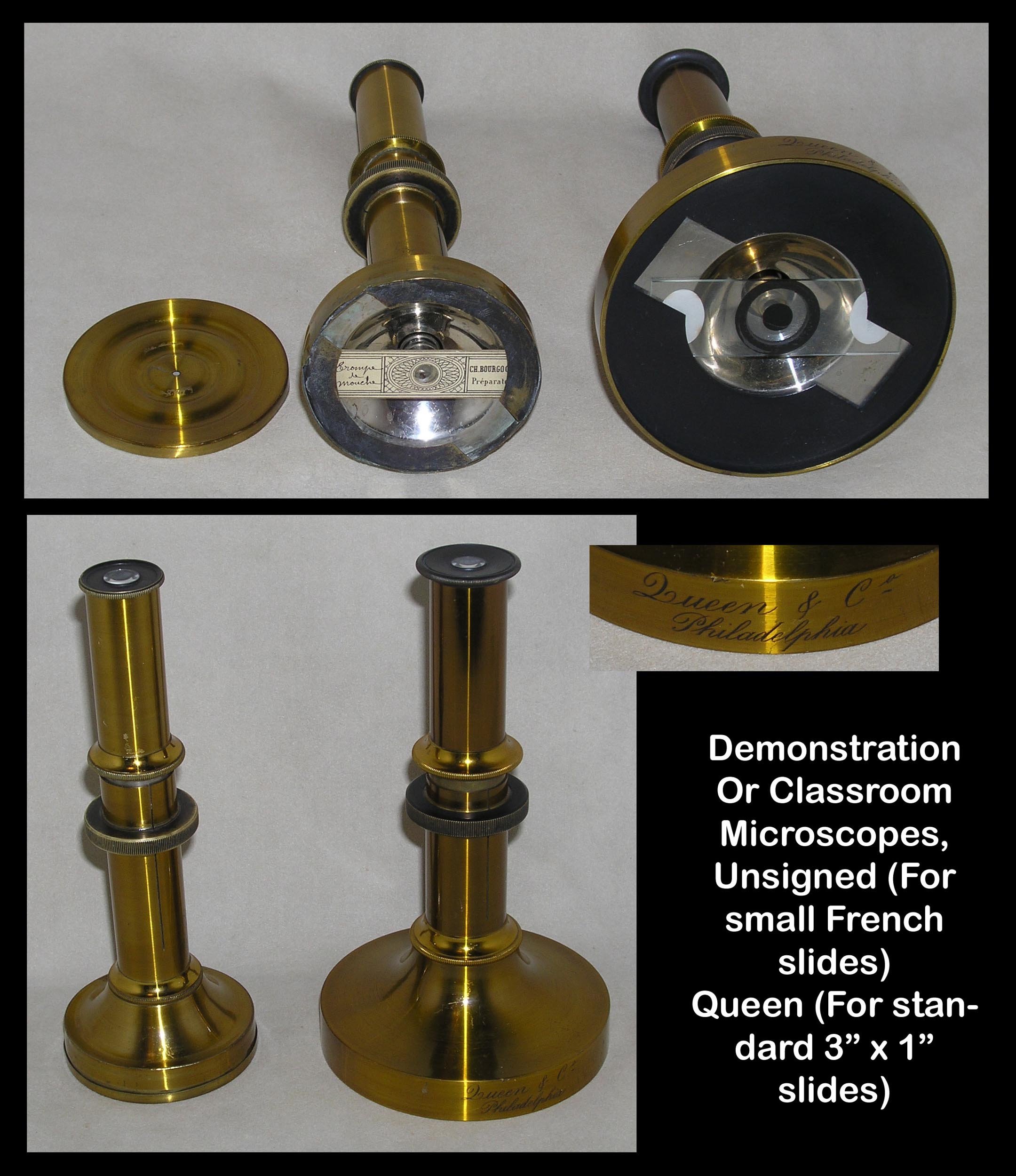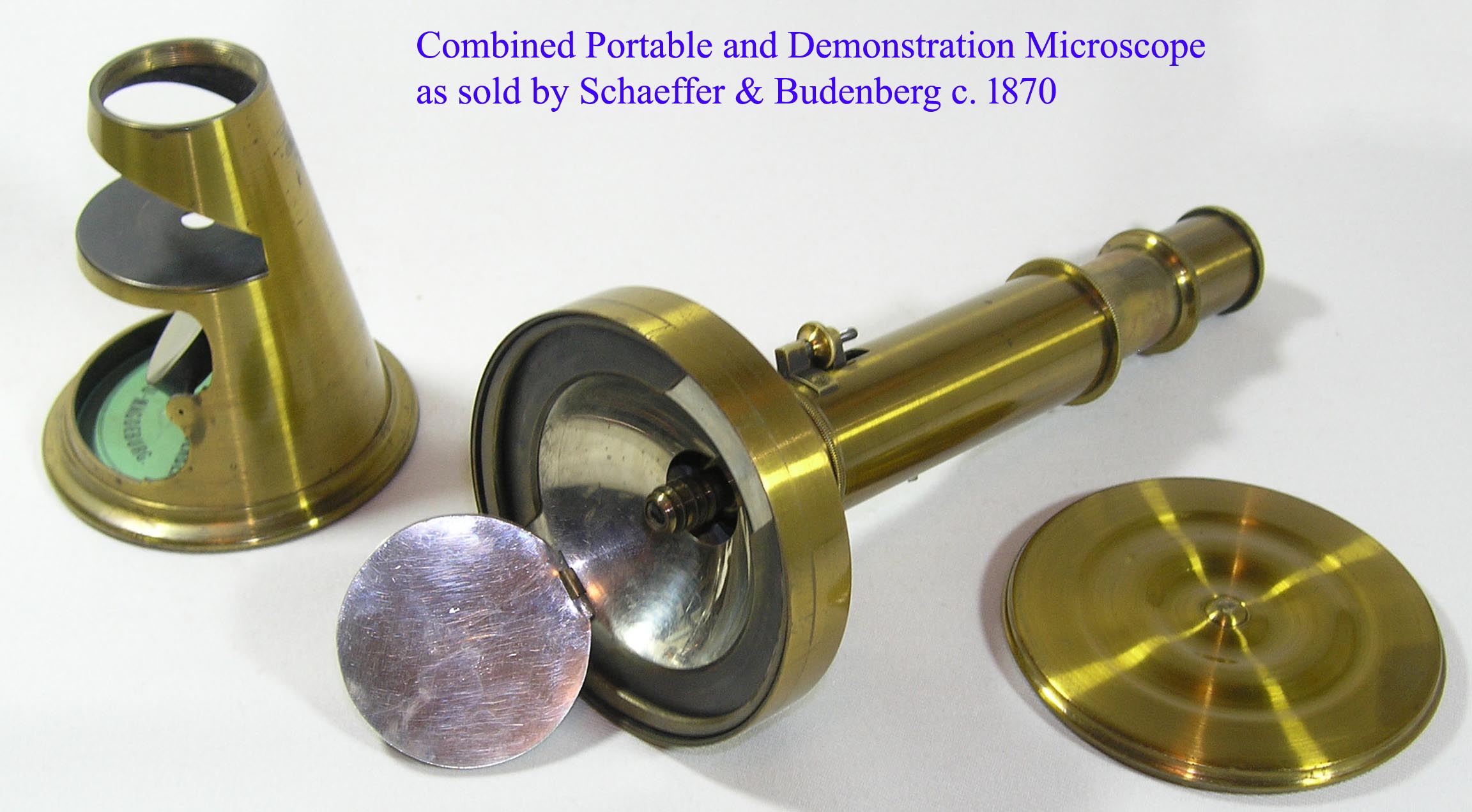| DESCRIPTION | HISTORY |
Please Click On Any Picture for a Larger Version
 This is a Rappard (Engell) Type of Demonstration Microscope, probably by Paul Waechter. It is specifically designed to be used with both opaque and transparent objects. It accepts only standard size slides. The base is about 3.5 inches in diameter. It is about 8 inches high when in focus on a slide. It carries a 22 mm diameter eyepiece and a single 3-button objective. The Lieberkuhn reflector is about 2 3/16 inches(55 mm) in diameter. A knurled blackened locking ring can be used to lock the focus. The protective bottom cap has a small (3-4 mm) diameter opening in its center.
This is a Rappard (Engell) Type of Demonstration Microscope, probably by Paul Waechter. It is specifically designed to be used with both opaque and transparent objects. It accepts only standard size slides. The base is about 3.5 inches in diameter. It is about 8 inches high when in focus on a slide. It carries a 22 mm diameter eyepiece and a single 3-button objective. The Lieberkuhn reflector is about 2 3/16 inches(55 mm) in diameter. A knurled blackened locking ring can be used to lock the focus. The protective bottom cap has a small (3-4 mm) diameter opening in its center.

 Microscopes specifically marketed for the purpose of being a school or demonstration microscope can be traced to no later than the 1860's. Among the earliest was that invented by the Swiss citizen Conrad von Rappard, which was made by his company, Engell & Company, and subsequently distributed by Schaeffer & Budenberg in Germany. Variations included both a smaller version to accept small slides. as well as the larger one to accept standard 1 x 3 inch slides. These were initially only usable as a handheld instrument, but they were soon marketed with a base to replace the demonstration slide holder so that the instrument could also be used as a portable table microscope. These convertible versions had a fine focus added, in addition to the standard sliding coarse focus. Although the inventor was von Rappard, it is commonly referred to as an 'Engell' microscope. After Engell & Company and Schaeffer & Budenberg, ceased operations in the 1880's, the production of the Engell Microscope was apparently taken over by Paul Waechter, also in Germany. Sometimes these are referred to as Waechter types, but they were not invented by Waechter. These were exported from Germany and sold in the U.S.A. by Queen & Company with their own signature. Most signed by Queen were likely made by Waechter. Waechter called it their 'Demonstration, School and Salon Microscope' and they numbered it as their 'Stand VIII.'
Microscopes specifically marketed for the purpose of being a school or demonstration microscope can be traced to no later than the 1860's. Among the earliest was that invented by the Swiss citizen Conrad von Rappard, which was made by his company, Engell & Company, and subsequently distributed by Schaeffer & Budenberg in Germany. Variations included both a smaller version to accept small slides. as well as the larger one to accept standard 1 x 3 inch slides. These were initially only usable as a handheld instrument, but they were soon marketed with a base to replace the demonstration slide holder so that the instrument could also be used as a portable table microscope. These convertible versions had a fine focus added, in addition to the standard sliding coarse focus. Although the inventor was von Rappard, it is commonly referred to as an 'Engell' microscope. After Engell & Company and Schaeffer & Budenberg, ceased operations in the 1880's, the production of the Engell Microscope was apparently taken over by Paul Waechter, also in Germany. Sometimes these are referred to as Waechter types, but they were not invented by Waechter. These were exported from Germany and sold in the U.S.A. by Queen & Company with their own signature. Most signed by Queen were likely made by Waechter. Waechter called it their 'Demonstration, School and Salon Microscope' and they numbered it as their 'Stand VIII.'